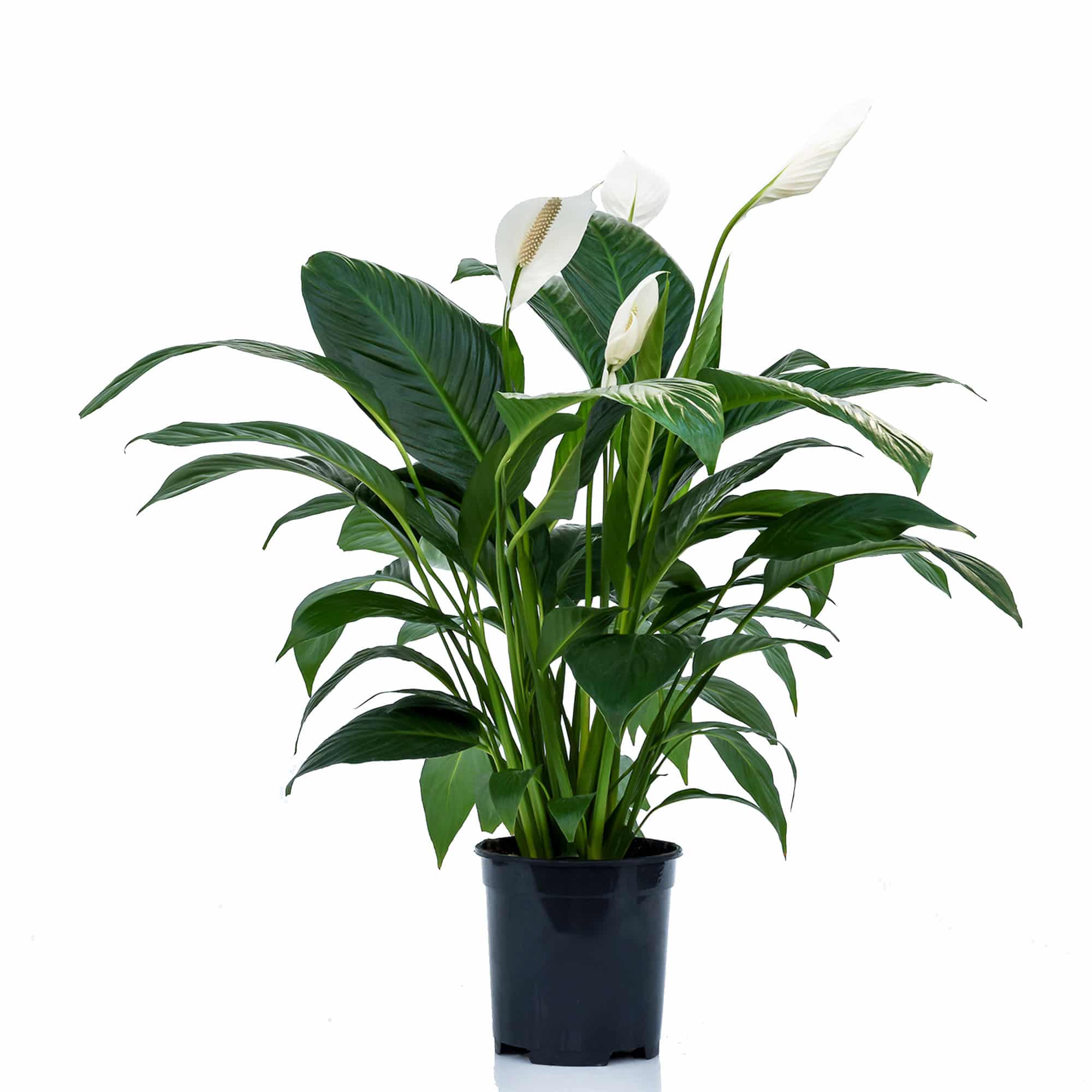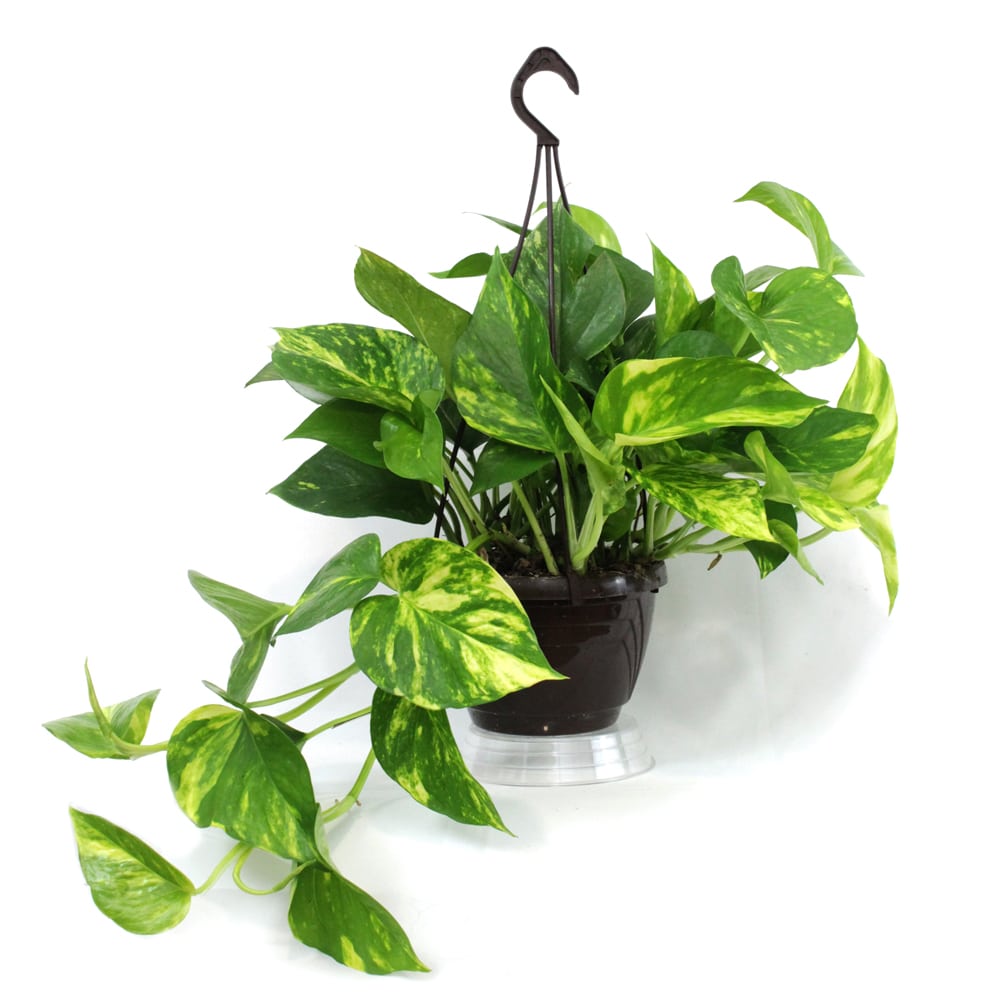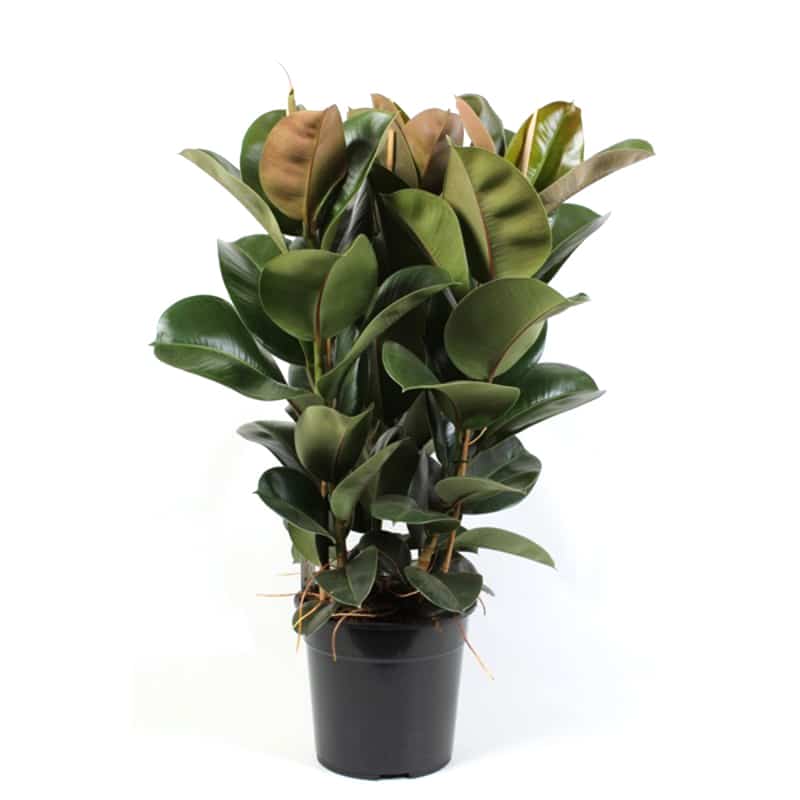Did you Know? In 1989, NASA discovered that houseplants can be air purifying. NASA’s Clean Air Study found that there are a number of air purifying plants that can detoxify your home from the airborne toxins, dusts and germs that can be found in a variety of household products, materials and furniture. While plants have less horse power than air purifiers, they’re more natural, cost effective, and therapeutic.
Plants are also known to:
– increase mood and productivity
– enhance concentration and memory
– reduce stress and fatigue
Spathiphyllum (Peace Lily)
A classy and delicate flowering plant that packs a powerful toxin absorbing capability, making it extremely useful to have in the house. It gets rid of benzene, trichloroethylene, formaldehyde and other pollutants in poorly ventilated areas. This Plant is available in a range of sizes, small ones that are ideal for table centerpieces to larger ones reaching over 100cm.
Care Tips: Peace lilies favor areas with filtered lighting conditions. Curled, pale leaves generally indicate that the plant is receiving too much light. During the summer, water and mist peace lilies frequently because they thrive with higher humidity, such as that found in the rainforest. In winter, reduce watering but never allow the soil to dry out.
Boston Fern (Nephrolepis Exaltata)
The Boston Fern can absorb formaldehyde better than any other known air purifying plant. In addition to that, they are adept at ridding the air of other pollutants such as xylene and benzene, which can be found in paints as well as gasoline exhaust fumes.
Care Tips: The Boston fern needs bright indirect light when grown indoors (outdoors, it prefers denser shade). It is important to keep the roots moist at all times. This plant loves humidity so remember to mist with water frequently if it’s placed in a dry area.
Aloe Vera
A healing aloe plant is a lovely addition to your kitchen windowsill, as it loves a sunny spot. While being on hand to soothe any kitchen burns, this succulent will be purifying the air of formaldehyde and benzene, found in varnishes and detergents.
Care Tips: Aloe Vera needs plenty of light, they can survive in direct sunlight but the leaves will probably turn yellow or brown. Water aloe vera plants deeply, but infrequently. To discourage rot, allow the soil to dry between waterings. Don’t let your plant sit in water.
Pothos (Epipremnum Aureum)
Pothos is very efficient at removing VOCs and toxins from the surrounding air. According to the clean air study by NASA, pothos plant removes pollutants such as benzene, toluene, formaldehyde, carbon monoxide and xylene from the air.
Care Tips: The Pothos is not a fussy plant and makes a great beginner plant. It can thrive in both bright and dim light conditions as long as it’s kept away from direct sunlight. For watering it’s best to give a small amount frequently than soak the soil in one go.
Ficus Elastic (Rubber Plant)
The leaves of rubber plants mainly absorb formaldehyde from the air. They absorb exhaled carbon dioxide and convert it to breathable oxygen. Rubber plants also eliminate bacteria and mold spores in the air.
Care Tips: The Rubber Plant prefers a humid environment and frequent watering in Summer. Reduce watering during the winter, keeping the soil moist but careful not to over water as plants require less water during their natural resting season. Keep the plant in a well lit environment but away from direct sunlight.
Although plants aren’t a substitute for adequate ventilation and healthy indoor air quality, you can grab some benefit from the so many more air purifying houseplants that help you live a healthier, better life. Plants will add a great touch to any room and even help to boost morale!




